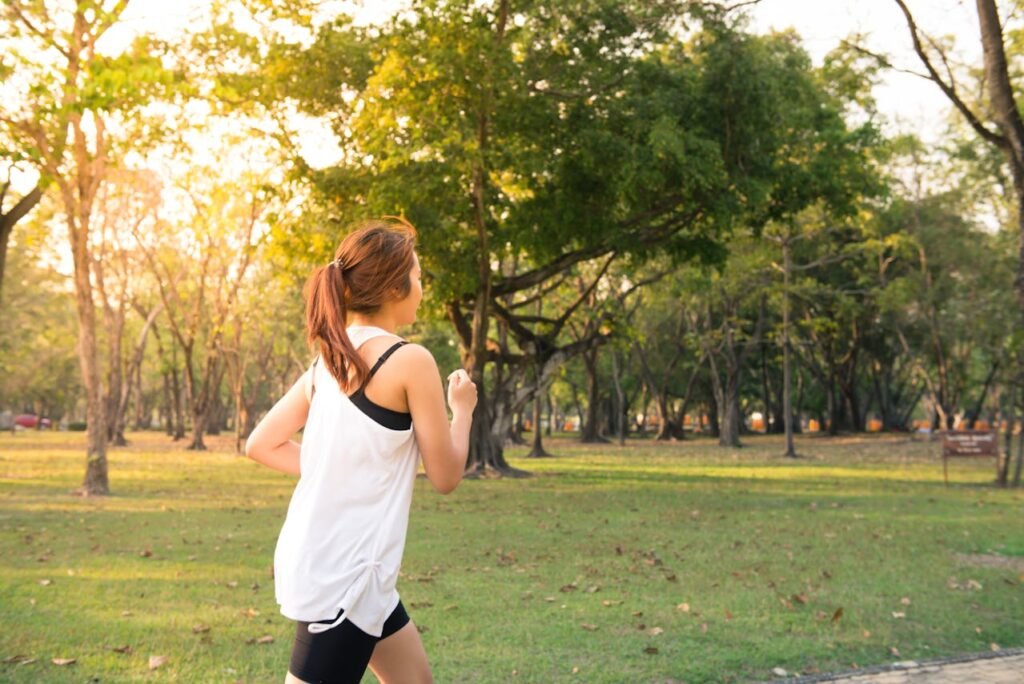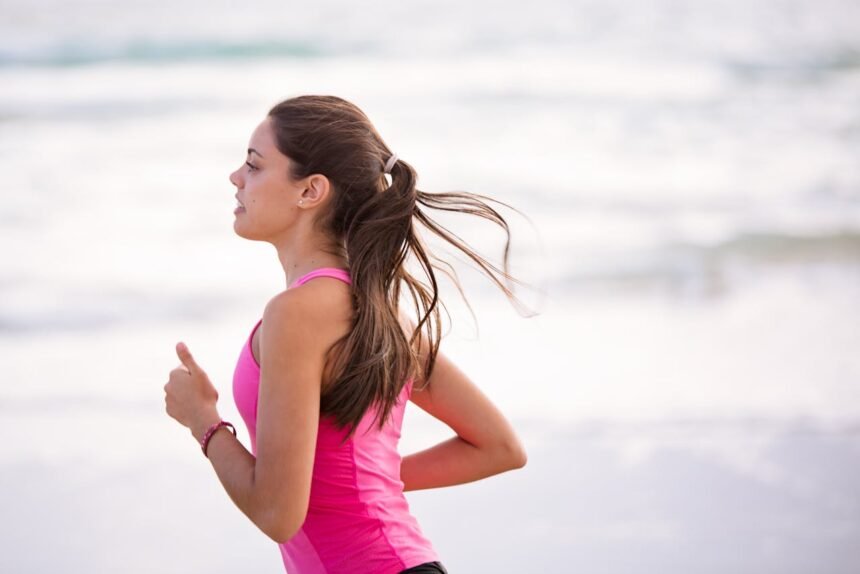Running is a wonderfully simple way to boost cardiovascular fitness and mental wellbeing, yet climate extremes—from sizzling summers to bitter winters—can complicate the first steps. Use these practical, easy-to-read guidelines to stay safe, build mileage sensibly and keep your carbon footprint light.
Start Smart: Climate-Aware Goal-Setting
Running success begins with clear, realistic targets. Rather than fixating on time, focus on effort and consistency to let your body adapt to heatwaves, downpours or icy mornings. Schedule three runs a week, mixing a run-walk session, an easy continuous jog and a slightly longer weekend outing. In hot months, plan dawn or dusk miles; conversely, winter novices thrive at midday when sunlight lifts temperatures. Include two rest days for muscle repair and one cross-training slot—cycling or yoga—for balanced strength. Track progress with free apps, but silence pace alerts in extreme weather. Aim for 30-second improvements per fortnight instead of daily PRs, and celebrate sustainability by logging kilometres saved versus car trips.berkeleyhalfmarathon+3
Dress for Success: Kit that Cools or Insulates
Proper clothing is your first line of defence against climate stress. Lightweight, moisture-wicking tops and shorts in pale hues reflect solar radiation and speed sweat evaporation. Add a breathable cap, UV-blocking shades and SPF30 sunscreen—even through clouds—to avoid burns. In freezing air, adopt the three-layer rule: a wicking base, insulating mid-layer and wind-proof shell. Swap cotton socks for merino or synthetic blends to curb blisters year-round. Shoes with deep outsole grooves grip wet leaves or slush; rotate pairs to extend lifespan. Reduce landfill by choosing recycled fabrics and repairing tears rather than buying new.economictimes.indiatimes+3
Heat Hacks: Stay Cool When Mercury Soars
High temperatures raise heart rate and dehydration risk, but beginners can thrive by applying heat-specific tactics. Pre-cool with an ice slurry or chilled towel 15 minutes before heading out. Carry a handheld bottle filled with electrolyte drink, taking small sips every 10–15minutes. Slow your pace by 45–60seconds per kilometre and seek shaded trails where air feels 3–5°C cooler. Mid-run water dousing lowers core temperature and boosts comfort. If your sweat turns salty, add a pinch of sea salt to your post-run smoothie. On ozone-alert days, move indoors to a tread-mill rather than risk heat illness.highfive+2
Winter Wisdom: Outsmarting Cold, Wind and Ice
Running in sub-zero conditions toughens resolve yet demands caution. Dynamic warm-ups—arm swings, high knees—performed indoors elevate muscle temperature before you expose skin to chill. Layer wisely, remembering you should feel slightly cold at the door; overdressing causes sweat to freeze. Traction aids or trail shoes grip packed snow, while wool gloves preserve dexterity. Face buff pulled over mouth warms inhaled air and cuts windburn. Hydration still matters—cold blunts thirst cues—so sip room-temperature fluids afterwards. If windchill dips below –10°C or visibility drops in blizzards, reschedule: the treadmill is a friend, not a failure.rei+1
Rain-Ready Routine: Embrace Wet-Weather Runs
Drizzle shouldn’t derail consistency. Choose a water-resistant jacket, reflective hat and quick-dry socks to dodge chafing. Shorten stride, increase cadence and eye the ground—painted lines and metal covers turn slick. Stuff phone and keys in a sealed sandwich bag, and stash a dry towel plus spare clothes in the car for swift post-run warmth. If thunder cracks, seek shelter immediately; safety outranks mileage every time.onepeloton
Build Engine Capacity: Gradual Mileage Increases
Climate swings can mask fatigue, so adopt the 10% rule cautiously. For absolute novices, add no more than 1km per week for the first month and cap the longest run at 40% of total weekly distance. Incorporate hill-free routes during heat spikes or icy spells to avoid cardiac overload. Active recovery—brisk walks or foam-rolling—enhances circulation and helps joints adjust to new stresses. Keep one weekly session at conversational pace to train aerobic metabolism even as weather fluctuates.

Breathing & Form: Efficiency in All Elements
Run tall, relax shoulders and swing arms forward, not across your body, maintaining a slight forward lean when battling headwinds. Breathe rhythmically—two steps inhale, two steps exhale—through both mouth and nose to maximise oxygen uptake. In extreme heat, slower diaphragmatic breaths lower heart strain; in cold, narrower nostril breaths warm incoming air. Short ground-contact strides boost stability on wet leaves or black ice.rei
Eco-Friendly Footprint: Climate-Conscious Running
Being a runner means respecting the planet that provides our playground. Opt for shoes made with recycled midsoles, share lifts to parkrun, and carry a reusable soft-flask to cut single-use plastics. Wash kit on cool cycles and air-dry to save energy. Join community litter-picks or plogging events to combine cardio with clean-ups, and donate retired trainers to charity programmes.thegreenrunners
Nutrition & Hydration: Fuel for All Seasons
Sweat rates double above 20°C, so beginners should aim for 400–800ml water per hour plus electrolytes during heatwaves. Salted watermelon or homemade isotonic drinks (water, honey, pinch of salt) replace sodium without ultraprocessed additives. Cold-weather runners crave carbs—oats with cinnamon, banana and nut butter warm the core—yet don’t neglect protein (1.2g/kg body weight) for muscle repair. After sodden sessions, hot cacao with added electrolytes comforts and replenishes.highfive
Safety First: Visibility, Navigation & Tech
Climate extremes often reduce light or air quality. Wear hi-vis vests with reflective strips at dawn/dusk. Run against traffic on roads and inform a friend of your route. Weather apps predict temperature swings; adjust clothing or timing accordingly. GPS watches track pace but also show ambient temperature—halt if it spikes above 32°C or drops below –15°C. Carry ID and a contactless card for emergencies, plus pepper spray in remote zones.onepeloton+1
Mental Resilience: Motivation Through Weather Mood-Swings
Beginners frequently struggle with consistency when skies threaten. Reframe storms as adventure and heat as a test of grit. Set micro-goals—“Run to the next lamp-post”—to break mental barriers. Post-run, jot a climate note in your training log: temp, humidity, wind. Seeing progress under varied conditions reinforces confidence.
Recovery Rituals: Climate-Specific Aftercare
Cool showers strip sweat salts after hot runs; contrast showers (warm then cool) stimulate circulation after cold trudges. Stretch major muscle groups while heart rate normalises. In heat, elevate legs to reduce swelling; in cold, slip into dry thermal gear within five minutes. Sleep 7–9h to consolidate adaptation—particularly important as the body works harder to thermoregulate.
Frequently Asked Questions
Q1. How hot is too hot for a beginner run?
Once air temperature exceeds 32°C or the heat index tops 38°C, beginners should shorten sessions, choose shaded routes or switch to indoor treadmills to prevent heatstroke.highfive
Q2. Can I run when it’s snowing?
Light snow is fine if you wear traction shoes and reflective kit; avoid blizzards or when ice covers roads.treelinereview+1
Q3. Do I still need to drink in winter?
Yes—cold dampens thirst. Sip 150–250ml every 20minutes on runs longer than 45minutes.rei
Q4. What’s the best fabric for all-season running tops?
Merino blends regulate temperature in both heat and cold, resist odour and dry quickly.onepeloton
Q5. How do I stay motivated during monsoon storms?
Set indoor backup workouts, use weather-proof podcasts and remember each rain-run boosts mental toughness.onepeloton
By blending climate-savvy strategies with gradual, enjoyable training, you’ll not only survive but thrive as a new runner—whatever the forecast. Lace up, respect the elements and let every kilometre teach resilience.
- https://berkeleyhalfmarathon.com/blog/2023/06/13/climate-and-running-how-to-train-for-different-weather/
- https://www.rei.com/learn/expert-advice/winter-running-tips.html
- https://www.onepeloton.com/blog/running-tips-for-beginners
- https://www.asics.com/au/en-au/blog/running-in-hot-weather-tips/
- https://health.economictimes.indiatimes.com/news/industry/how-to-prepare-for-a-run-in-rising-temperatures/91394739
- https://www.on.com/en-in/stories/no-off-season-running-through-the-winter
- https://www.runnersworld.com/uk/health/a776373/running-in-the-heat/
- https://highfive.co.uk/blogs/guides/running-in-hot-weather-survival-guide
- https://www.treelinereview.com/learn-skills/running-in-the-cold
- https://www.onepeloton.com/blog/tips-for-running-in-the-rain
- https://thegreenrunners.com/6-top-tips-to-be-a-climate-friendly-runner/
- https://www.runnersneed.com/expert-advice/gear-guides/10-safety-tips-for-running-in-dark.html
- https://www.runnersworld.com/uk/training/beginners/a40088632/running-tips-for-beginners/
- https://hummel.net.in/blogs/explore/running-a-beginner-s-guide
- https://www.asics.com/za/en-za/blog/article/running-in-cold-or-bad-weather
- https://runkeeper.com/cms/start-running/six-simple-strategies-to-succeed-as-a-beginner-runner/
- https://www.sabrered.com/blog/beat-the-heat-4-safety-tips-for-outdoor-runners/
- https://www.youtube.com/watch?v=vqV0j68ulJA
- https://www.redbull.com/in-en/running-in-the-heat-athlete-tips
- https://jaciwilsonruns.com/winter-running/






